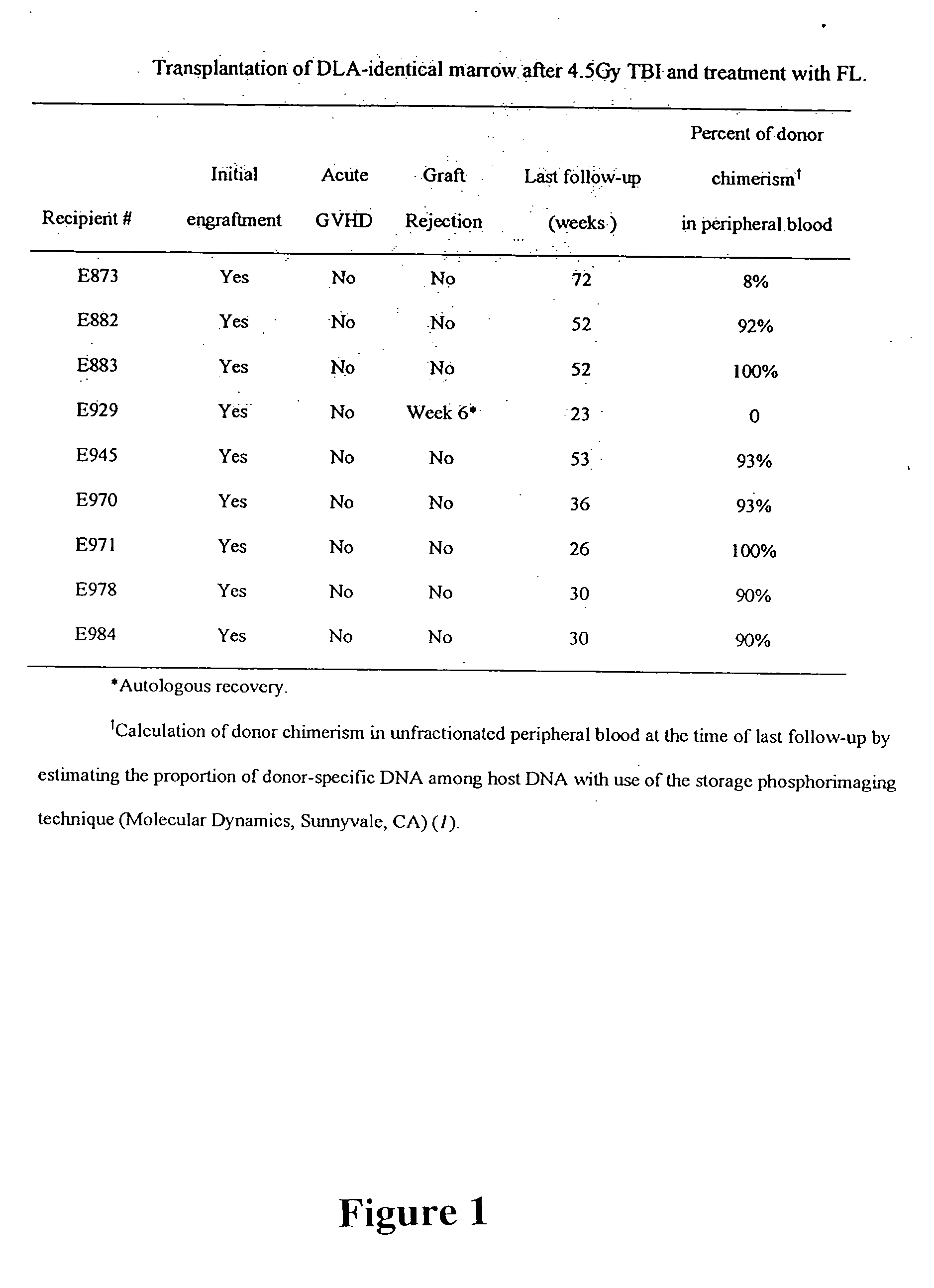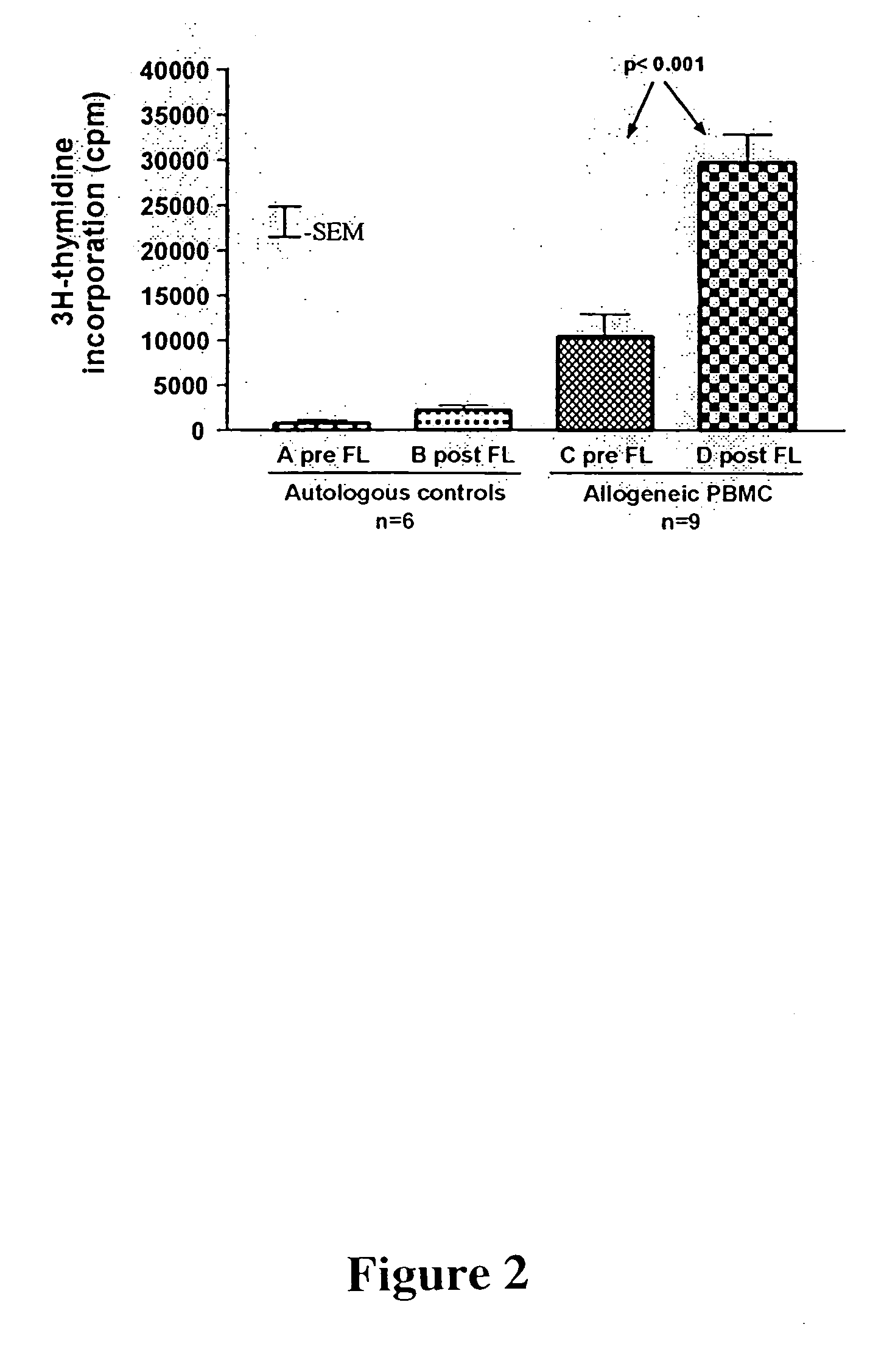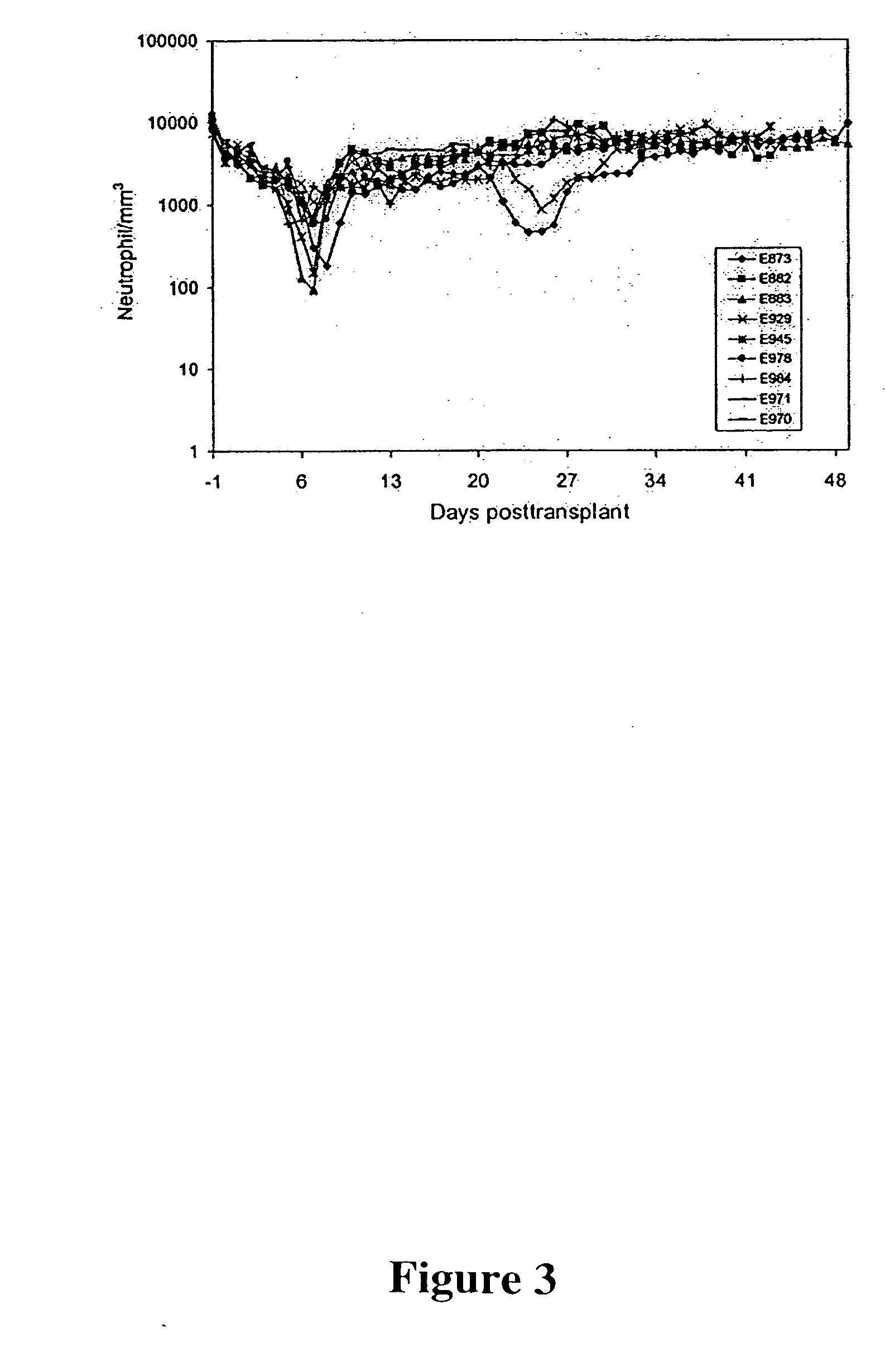Methods of using Flt3-Ligand in hematopoietic cell transplantation procedures incorporating nonmyeloablative conditioning regimens
a technology of hematopoietic cell transplantation and flt3-ligand, which is applied in the direction of peptide/protein ingredients, extracellular fluid disorder, peptide sources, etc., can solve the problems of increasing the risk of infection and bleeding disorders, limiting the use of cytoreductive therapies, and increasing morbidity and mortality
- Summary
- Abstract
- Description
- Claims
- Application Information
AI Technical Summary
Benefits of technology
Problems solved by technology
Method used
Image
Examples
example 1
Use of Flt3-L Alone and in Combination with IL-7 or IL-3
[0168] This example demonstrates the stimulation and proliferation of AA4.1+ fetal liver cells by compositions containing flt3-L and IL-7; as well as the stimulation and proliferation of c-kit-positive (c-kit+) cells by compositions containing flt3-L and IL-3.
[0169] AA4.1-positive (AA4.1+) expressing cells were isolated from the livers of day 14 fetal C57BL / 6 mice by cell panning in Optilux 100 mm plastic Petri dishes (Falcon No. 1001, Oxnard, Calif.). Plates were coated overnight at 4° C. in PBS plus 0.1% fetal bovine serum (FBS) containing 10 μg / ml AA4.1 antibody (McKearn et. al., J. Immunol., 132:332-339, 1984) and then washed extensively with PBS plus 1% FBS prior to use. A single cell suspension of liver cells was added at 107 cells / dish in PBS plus 1% FBS and allowed to adhere to the plates for two hours at 4° C. The plates were then extensively washed, and the adhering cells were harvested by scraping for analysis or f...
example 2
Flt3-L Stimulates Proliferation of Erythroid Cells in the Spleen
[0177] This example describes the effect of flt3-L on the production of erythroid cells in the spleen of transgenic mice. Transgenic mice were generated according to the procedures of Example 9. The mice were sacrificed and each intact spleen was made into a single cell suspension. The suspended cells were spun and then resuspended in 10 ml of medium that contained PBS+1% fetal bovine serum. Cell counts were performed thereon using a hemocytometer. Each cell specimen was counted with Trypan Blue stain to obtain a total viable cell count per milliliter of medium according to the following formula: (RBC+WBC) / ml, wherein RBC is the red blood cell count and WBC means the white blood cell count. Each specimen then was counted with Turk's stain to obtain a total white blood cell count per milliliter of medium. The total red blood cell count per milliliter was calculated for each specimen by subtracting the total white blood ...
example 3
Flt3-L Stimulates Proliferation of T Cells and Early B Cells
[0179] Bone marrow from 9 week old transgenic mice generated according to Example 9 was screened for the presence of various T and B cell phenotype markers using antibodies that are immunoreactive with such markers. The following markers were investigated: the B220 marker, which is specific to the B cell lineage; surface IgM marker (sIgM), which is specific to mature B cells; the S7 (CD43) marker, which is an early B cell marker; the Stem Cell Antigen-1 (SCA-1) marker, which is a marker of activated T cells and B cells; CD4, which is a marker for helper T cells and some stem cells; and the Mac-1 marker, which is specific to macrophages, were screened using well known antibodies against such markers. The following Table IV shows the data obtained from screening the bone marrow. Two transgenic mice from the same litter were analyzed against a normal mouse from the same litter (control), and an unrelated normal mouse (control...
PUM
| Property | Measurement | Unit |
|---|---|---|
| pH | aaaaa | aaaaa |
| weight | aaaaa | aaaaa |
| weight | aaaaa | aaaaa |
Abstract
Description
Claims
Application Information
 Login to View More
Login to View More - R&D
- Intellectual Property
- Life Sciences
- Materials
- Tech Scout
- Unparalleled Data Quality
- Higher Quality Content
- 60% Fewer Hallucinations
Browse by: Latest US Patents, China's latest patents, Technical Efficacy Thesaurus, Application Domain, Technology Topic, Popular Technical Reports.
© 2025 PatSnap. All rights reserved.Legal|Privacy policy|Modern Slavery Act Transparency Statement|Sitemap|About US| Contact US: help@patsnap.com



